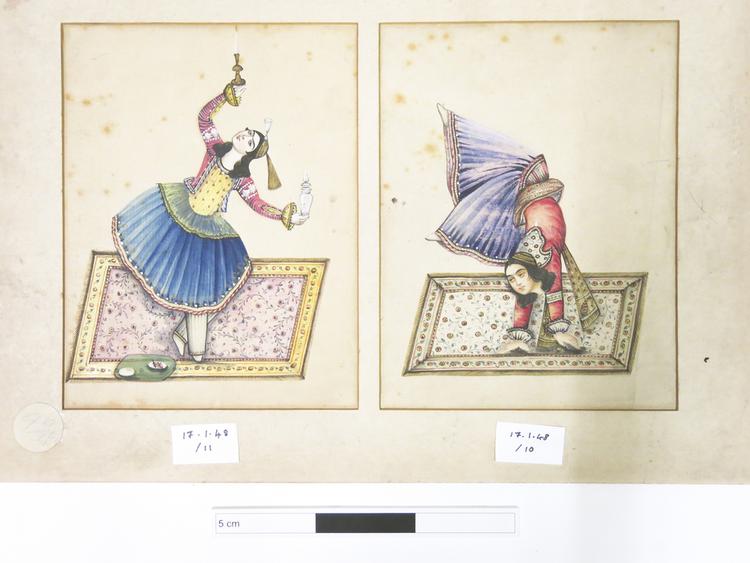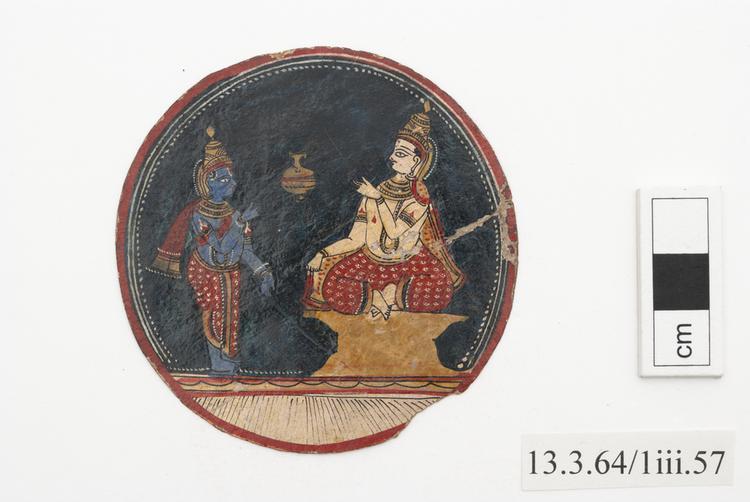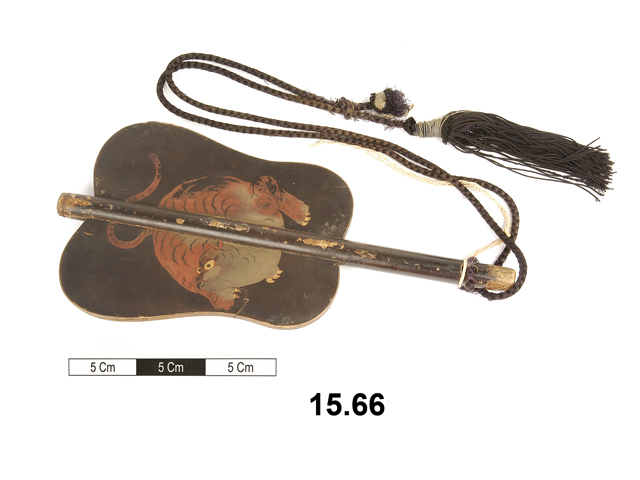
Drawing on paper, tinted with watercolours. The painting depicts a female juggler demonstrating impressive skills: balancing a full glass on her head whilst juggling with a vase and a lit candle. It is mounted in a pair in a cardboard frame.
This painting is one of a series of watercolours which depict scenes that are well known in nineteenth century Persian painting and commercial photography. Judging by the fashions worn by the painting's subjects they were probably painted between 1850 and 1875, quite possibly for sale to tourists. This example shows a female juggler. She demonstrates impressive skills: balancing a full glass on her head whilst juggling with a vase and a lit candle. Although the juggler would not have been a member of the elite class in Persian society she wears the sort of indoor clothing which was favoured by the urban elite, since in nineteenth century Persia the servants of the elite and those who performed for the elite dressed in similar fashions to their employers. On her upper arms the juggler wears bazuband talismanic ornaments (see Horniman objects 6.12.65/611 and 8.10.66/13). Placed on the carpet in front of her is a dish bearing two plates, on one of which there appears to be kebabs. Perhaps the most noticeable element of the juggler’s costume, to the modern eye at least, is her translucent blouse, which would have been for wear in private only. These blouses, which were worn with nothing on underneath, scandalised many nineteenth century European visitors (although one suspects that not all were so outraged). Paintings of female entertainers were very popular in nineteenth century Persia. They were rarely exhibited on their own and were usually hung in sets on the walls of a room.






